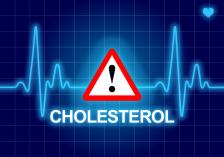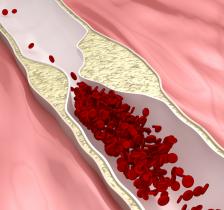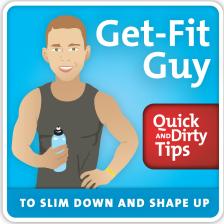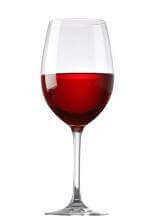What Is the Best Workout for Lowering Cholesterol?
High LDL cholesterol has been linked with the risk of heart disease. But cholesterol has also gotten a bad rap. Get-Fit Guy explains the latest research into the cholesterol-heart disease connection, plus gives 3 tips for lowering your levels of triglycerides (the real heart attack culprits).
Ben Greenfield

But wait! Isn’t consuming too much fat dangerous for cholesterol-related heart disease, as well as for increased risk of weight gain?
In short, no.
Not only does a high fat, low carbohydrate diet perform better for weight loss compared to a low fat, high carbohydrate diet, but there is no evidence that the cholesterol particles derived from fat increase your risk of heart disease…unless that high fat consumption is paired with a moderate to high intake of starchy, sugary carbohydrates. It is at that point that cholesterol can become oxidized and lead to increased risk of heart disease.
The entire idea that high cholesterol causes heart disease is a flawed hypothesis. A good place to start is Nutrition Diva’s insightful episode Is the Link Between Cholesterol and Heart Disease Bogus?
So if cholesterol isn’t all that bad, then why is this episode’s title suggesting that you should be exercising to lower it? I’ll admit it – I tricked you.
What Are Triglycerides?

See also: What is the Difference Between HDL and LDL Cholesterol?
So what are triglycerides? Triglycerides are simply a type of fat found in your blood. When you eat, your liver quite easily converts any calories it doesn’t need to use for energy into triglycerides. The triglycerides can then be stored in your fat cells, and later, hormones can signal triglycerides to be released for energy between meals.
But if you regularly eat more calories than you burn, particularly calories from sources such as carbohydrates, fructose, and vegetable oils, you may have high triglycerides (hypertriglyceridemia), a high triglyceride-to-HDL ratio, which increases your risk of death from heart disease. High triglycerides can contribute to hardening of the arteries or thickening of the artery walls (atherosclerosis) – which increases your risk of stroke, heart attack, and heart disease.
How to Lower Your Triglycerides
Fortunately, now that you know that triglycerides and your HDL are ultimately a better measurement of your heart disease risk factors than your total cholesterol, and that your triglycerides become elevated by having too much energy on board, the fix for lowering triglycerides seem quite straightforward: Simply burn as many as, or more, calories than you consume.
But why not get a leg up? Here are 3 targeted tips for how to lower your triglycerides (or raise your HDL cholesterol):
Tip #1: Do Aerobic Exercise

The aerobic training wasn’t anything too voluminous – they simply exercised aerobically for 3 days a week at 60-70% of maximum heart rate for 6 weeks. The resistance training was performed on alternate days, also for 6 weeks. During this time, researchers measured participants’ heart rate, LDL and HDL cholesterol levels, blood pressure, BMI, and body fat percentage both before and after the exercise regimens.
When it came to nearly every cardiovascular risk factor, aerobic training was found to be more beneficial and a more powerful preventive measure in patients who are at risk of developing cardiovascular diseases due to obesity.
That’s not to say that resistance training isn’t useful for everything from muscle mass to bone density – it’s just that if your ultimate goal is to lower the more dangerous form of cholesterol or to increase HDL, you need to include some type of aerobic component in your training plan. A good place to start is with my episode What’s the Best Kind of Cardio?
Tip #2: Do Intense Exercise

One group performed bicycling exercise of moderate intensity for 40 minutes a day for 5 days a week. The other group did high intensity interval training (HIIT) for 20 minutes a day for 3 days a week for a period of 15 weeks.
After the 15-week period, the higher intensity, lower volume group experienced a significantly greater reduction in cholesterol and blood pressure, although both groups showed significant decreases in BMI, lipid profile (including triglycerides), and blood pressure.
So what does this mean for you? Ultimately, when it comes to cardio, if your time is valuable, you’re best served by moderate, brief bouts of high intensity interval training.
Tip #3: Time Your Alcohol and Fructose Consumption

So if you eat fruits and other fructose-based sugars when your liver’s carbohydrate levels are already full, you’re not going to shove that extra sugar into muscle tissue for storage. Instead, your liver is going to quite easily convert that excess fructose into triglycerides. In case you’re wondering, your liver can store about 400 calories worth of carbohydrates before it’s full.
For this reason, I’m a big fan of saving my day’s fructose and alcohol intake when my liver’s glycogen stores are empty. This means that if I’m going to consume alcoholic drinks like wine and beer, I do so after my late afternoon or early evening workout, and not after I’ve eaten 800-1,000 calories worth of dinner!
And if I eat fruit, I primarily eat it in the morning when my liver’s glycogen stores are empty (you burn through much of your liver’s glycogen stores during sleep) or, similar to my alcohol timing, in a post-workout scenario.
Have you tried decreasing your cholesterol or triglyceride levels through exercise? What was your experience? Share your story with us at Facebook.com/GetFitGuy.
Cholesterol warning and atherosclerosis images courtesy of Shutterstock.

